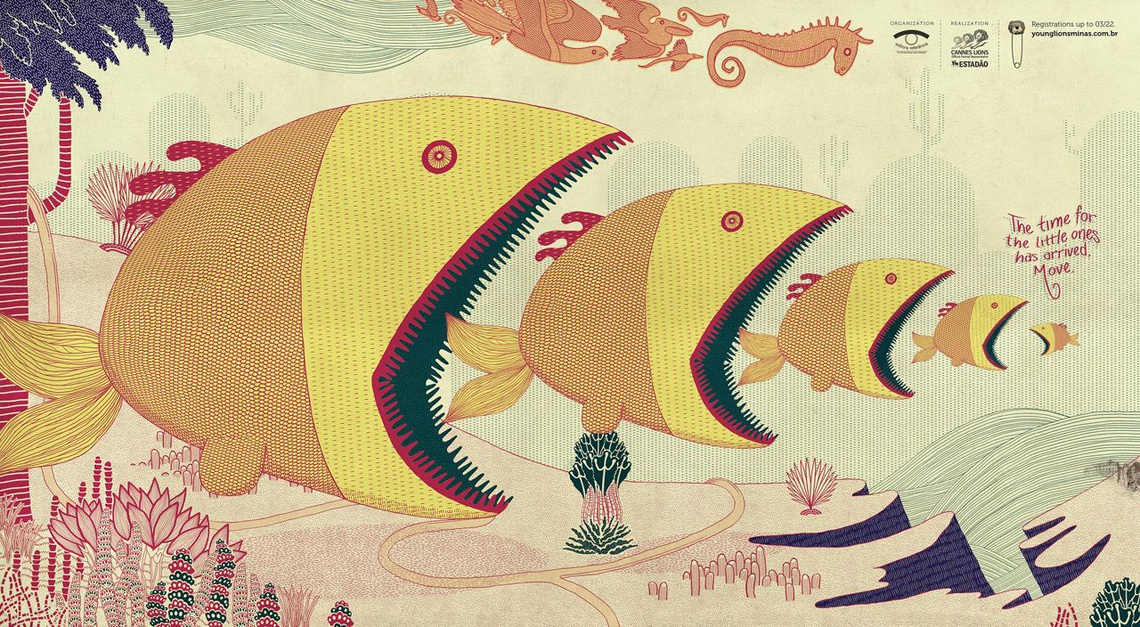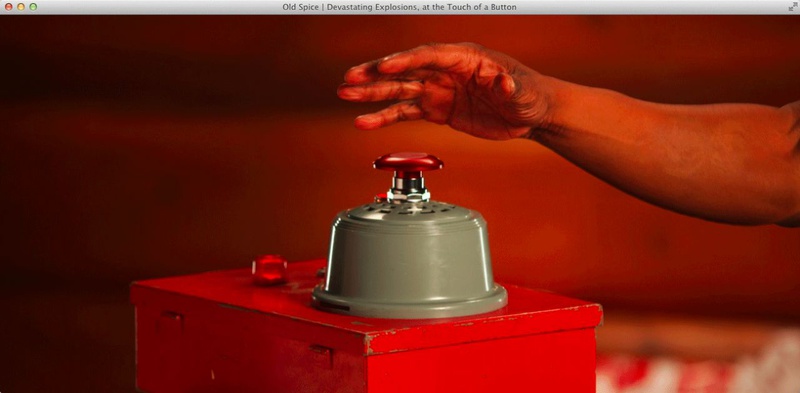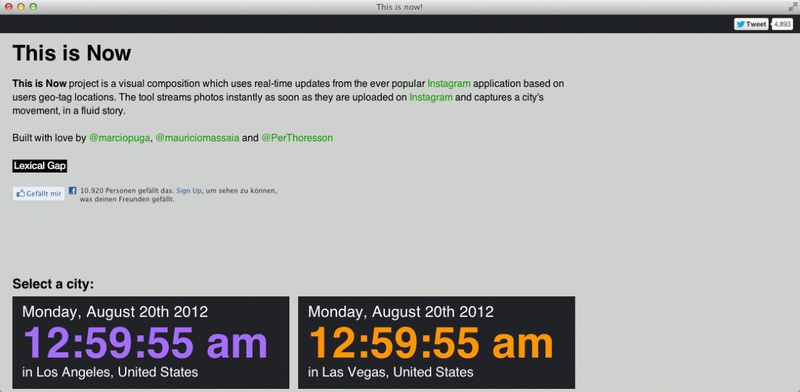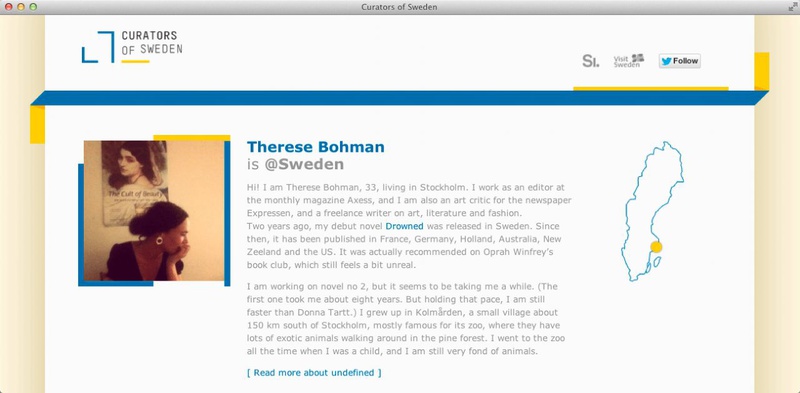The difference between traditional and digital gets blurrier every day.Our faithful readers will be familiar with Calle Sjoenell, Chief Creative Director of Ogilvy New York since spring of this year, and the man behind the selection of digital work showcased in the current issue of Archive. He and his brother Pelle – at the time joint Executive Creative Directors at BBH, New York – were the subjects of an interview by Hermann Vaske that we ran back in Vol. 1-2010. Calle had moved to the US from his native Sweden in 2006 after having founded and run Moonwalk, his own successful agency, to become Group Creative Director at Fallon Worldwide in Minneapolis. He has won numerous creative awards at Cannes, the One Show, and the Grand Prix at the Montreux Advertising Festival. In the interview that follows, Michael Weinzettl chats to Calle about what has happened to the Swedish expat in New York in the two years since his last encounter with Archive.
L.A.: Hi, Calle. For those of our audience who didn’t read the interview with you and your brother, Pelle, which we ran a couple of years ago (Vol. 1-2010), can you briefly introduce yourself and tell us something about your background?
Calle Sjoenell: I grew up in Stockholm and started an interactive agency called Moonwalk together with Magnus Bergmark. Ten years later, I moved to Fallon Minneapolis to start working with my brother, Pelle Sjoenell, as a creative director team combining interactive and traditional advertising. Pelle taught me his side of the business and I taught him mine. After a year, we went to BBH to handle the AXE account and, gradually, we started working more and more on Google Chrome.
L.A.: What have you been doing in the two years since the last Archive interview?
Calle Sjoenell: The last two years have seen a lot of things happen. I married Anna and we had a daughter, Lily, in October 2010. Pelle moved to LA to start up BBH there, and it is now a thriving agency. In NY, I worked on Google Chrome and the campaign, “The web is what you make of it” with memorable moments such as Dear Sophie and It Gets Better.
L.A.: You’ve been CCO of Ogilvy NY for just a few months now but can you, perhaps, already tell us a bit about the challenges facing you there?
Calle Sjoenell: I started at Ogilvy & Mather in April 2012. My first impression is that it’s big, real big. The creative department is bigger than my previous agency, BBH NY. That brings both challenges and potential. We have lots of smart and talented people across interactive, mobile, branded entertainment, PR, social, etc, which makes any problem a phone call away inside the building. I’m really enjoying it!
L.A.: What are some of the projects you will be working on at Ogilvy NY? Who are your major clients? How many creative teams do you have to direct there?
Calle Sjoenell: I’m focusing on a few clients right now to go deep and, hopefully, lead the teams to interesting work. Right now, it’s Philips, IKEA, Castrol, Hellmann’s, and some Coke projects.
L.A.: Looking back on your career in advertising so far, what were some of the highlights? What is some of the work you’re really proud of?
Calle Sjoenell: If I had to select some previous work I’m really proud of, it would be AXE 100 Girls, Chrome Fastball, Chrome Speed Tests, and the It Gets Better spot for Google Chrome.
L.A.: Any low points in your career you want to share?
Calle Sjoenell: If I have to air a low point in my career, it would have to be a failed web project on Google Chrome that never saw the light of day. It was really tough, especially after all the blood, sweat and after-hour tears the teams put in.
L.A.:When asked in that interview two years ago what you would do if a client came and wanted a “traditional” print or poster campaign, you quipped that you would try to convince him otherwise. Is that always possible? And are there no situations where a “traditional” campaign could be a better solution for the client?
Calle Sjoenell: The difference between traditional and digital gets blurrier every day, which is mostly a good thing. Print is having a tougher time as a medium. I think that, soon, we will have to see it as a special interest medium, where it’s actually striving to make an impact. All the ads in Bicycling, Real Simple, and Out-door feel more like great content rather than ads. That is one example where print advertising can be really good and useful at the same time. I really hope those pubs continue to thrive.
L.A.: And what is the future of print advertising in your opinion? Is print advertising in general as “dead as a doornail,” as Fernanda Romano said in this very space?
Calle Sjoenell: One troubling aspect for our industry is the continual degradation in the craft of solving ideas in a still image. Advertising schools have so much to teach, and the craft of print and poster is being sidelined for all the new mediums. The skill and craft to synthesize your idea down to a single image is still very important to making people understand your idea in a single glance, wherever it may end up.
L.A.: What were some of the criteria you used when selecting the digital work for this issue of Archive?
Calle Sjoenell: I selected the websites that were pushing the envelope on the web when it comes to utility, entertainment, and technology. In my mind, the very best ones combine all three.
L.A.: What advice do you give students of advertising when they ask if they have chosen the right field of work?
Calle Sjoenell: My advice to young students is to create big life-changing ideas that take little or no money to produce and that are a perfect match for the brand and its products/services. That is the future of advertising. The means to make things are in anyone’s hands; the world is hyperconnected, so the opportunity to do interesting things has never been greater.
L.A.: How much longer do you give “advertising as we know it”?
Calle Sjoenell: Advertising as we know it will change fast in some areas and slower in others. Moving images will still make a huge impact when it comes to delivering emotions, wherever the situation and medium. Technology and social interaction will bring new platforms to express ideas in. People are hardwired for ideas and stories, so make sure you get good at coming up with them and keep up with how they propagate in culture.
L.A.: And what are some of the changes we will be seeing on the creative side of the ad industry in general?
Calle Sjoenell: For the future I hope that craft and ideas can live more side by side, that we take the time to make sure our best ideas look and feel good, and are told in a magic way.

















